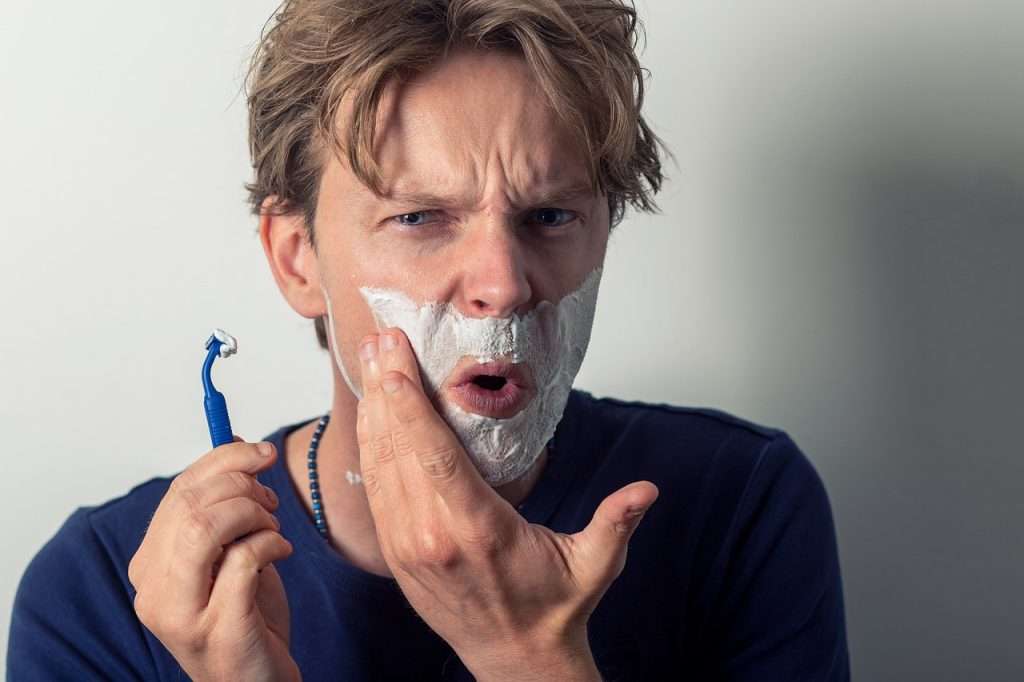Are you struggling with the pesky aftermath of shaving? Razor bumps, those unwelcome companions after a close shave, can turn smooth skin into a bumpy battleground. But fear not! Understanding how to prevent and treat razor bumps effectively is the key to achieving that desired baby-smooth skin without irritation.
In this article, we’ll explore methods and tips to bid farewell razor bumps and embrace a smoother, irritation-free shaving experience.
What are razor bumps?
Razor bumps, termed pseudofolliculitis barbae (PFB), are a common skin irritation that occurs after shaving. They can appear as red, itchy bumps, pimples, or even small scales. Razor bumps are most common in people with curly or coarse hair, especially those with darker skin tones.

What causes razor bumps?
- Shaving technique: Improper techniques, like shaving against hair growth or using a blunt razor, can increase the likelihood of developing razor bumps. Shaving against the grain can result in the hair being cut at an angle, making it more likely to curl back into the skin. Using a blunt razor can result in uneven hair cutting, increasing the chances of skin irritation.
- Hair type: Curly or coarse hair is more likely to curl back into the skin, leading to razor bumps. This is because curly or coarse hair naturally curves, making it more likely to get trapped under the skin.
- Skin type: People with oily or sensitive skin are more prone to razor bumps. Oily skin can make the hair become clogged, while sensitive skin is more prone to irritation.
- Genetics: Some people have a genetic predisposition to razor bumps. This means they are more likely to develop razor bumps, even if they do not have any other risk factors.
Other factors contributing to razor bumps include using too much shaving cream or gel, not rinsing the razor frequently, and shaving too often.
How long do razor bumps last?
The duration of razor bumps depends on the condition’s severity, the individual’s skin type, and the effectiveness of treatment. Generally, mild razor bumps tend to resolve within a few days. However, more severe cases may last for several weeks or even months.
Here are some factors that can affect the duration of razor bumps:
- The severity of the condition: Mild razor bumps typically clear up within a few days, while moderate to severe cases may take several weeks or months to resolve.
- Individual skin type: People with sensitive skin may experience longer-lasting razor bumps than those with normal skin.
- Effectiveness of treatment: Proper treatment, including using appropriate shaving techniques, avoiding harsh soaps or scrubs, and applying soothing lotions, can help to speed up healing and reduce the duration of razor bumps.
If razor bumps persist for more than two weeks or are accompanied by severe discomfort, seeking advice from a dermatologist is recommended for accurate diagnosis and treatment. They can evaluate the condition’s severity and suggest suitable treatment alternatives, such as prescription medications or laser therapy, to manage razor bumps effectively and prevent recurrence.
How To Treat Razor Bumps For Skin
Here are some of the things you can do to treat razor bumps:
- Use a warm compress on the area affected to reduce inflammation.
- Use an over-the-counter acne treatment to help kill bacteria and reduce inflammation.
- Avoid shaving the affected area until the bumps have healed. This will prevent further irritation.
- Use a moisturizer with salicylic acid or glycolic acid. These ingredients can aid in exfoliating the skin and prevent the hair from growing back into the skin.
- Apply a hydrocortisone cream to reduce inflammation and itching.
Can Vaseline heal razor bumps?
Petroleum jelly, like Vaseline, is versatile for treating different skin conditions, including razor bumps. It effectively moisturizes and reduces inflammation, soothing and aiding in the healing of razor bumps. Also, it forms a protective barrier on the skin, preventing further irritation.
How do you prevent dark skin after shaving?
Dark skin after shaving, or post-inflammatory hyperpigmentation (PIH), is a common skin condition that emerges as dark spots or patches on the skin after shaving, waxing, or alternative hair removal methods. PIH is most common in people with darker skin tones.
Here are some tips on how to prevent dark skin after shaving:
Shave following the direction of hair growth to prevent hair from curling back and causing irritation.
- Ensure you use a sharp razor to avoid skin irritation and reduce the risk of PIH.
- Shave in short strokes. Taking long strokes can increase the risk of irritation.
- Before shaving, exfoliate your skin to eliminate dead cells that might block pores and trap hair.
- Apply shaving cream or gel to the skin to facilitate a smoother shaving experience.
- Rinse the razor frequently. This will help to remove hair and shaving cream from the razor.
- Use an aftershave balm or lotion to calm the skin and reduce irritation.
- Keep your skin well-moisturized to maintain hydration and reduce irritation risk.
- Avoid using abrasive soaps or scrubs that could worsen post-inflammatory hyperpigmentation (PIH).
- Opt for loose-fitting clothing to prevent chafing and irritation.
- Manage your stress levels. Stress can worsen PIH.
Conclusion
Conquering razor bumps is about adopting a multi-faceted approach that combines proper shaving techniques, gentle skincare practices, and targeted treatments. You can alleviate razor bumps and prevent their return by exfoliating regularly, using suitable shaving products, and employing soothing remedies like aloe vera or over-the-counter solutions. Remember, patience and consistency are key, and finding the right routine tailored to your skin type will pave the way for a smoother, bump-free shave every time.

